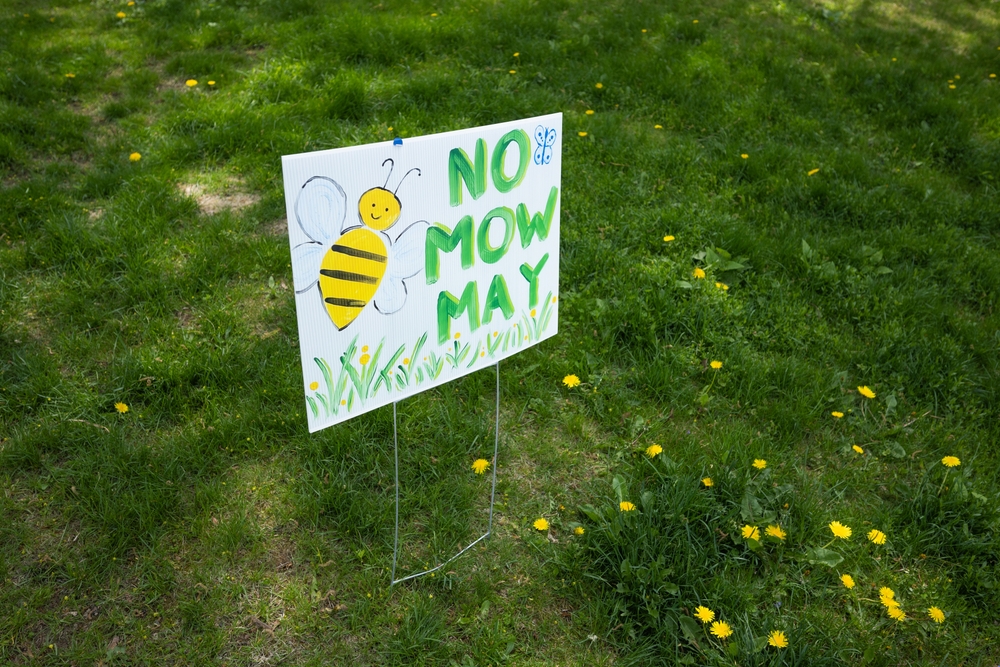How carbon farming, the practise of putting CO2 back into the soil, can help fight global warming.
Jay Walljasper| June 2008 issue

Of all the potential solutions for global warming, this has to be one of the, well, most unusual: “Eat a local grass-fed burger.” Yet John Wick is entirely serious when he suggests it on an unseasonably warm and sunny winter morning—the kind that lulls you into thinking climate change can’t be all bad—during a meeting of environmentalists and sustainable agriculture advocates at his California ranch.
It’s a diverse group—longtime ranchers, a forestry professor from Berkeley, organic food activists, the author of a new book on global warming, a Vermont dairy farmer, the author of a famous children’s book—united in their belief that current proposals to address the climate crisis simply don’t go far enough.
“We now have 380 parts per million of carbon in the atmosphere compared to 280 before the industrial revolution,” notes Wick, echoing the conclusions of a report released last year by the UN’s Intergovernmental Panel on Climate Change (IPCC), the group awarded the 2007 Nobel Peace Prize with former U.S. vice-president Al Gore. “Even if we stopped all emissions today, which is a long way from happening, it would still be 345 a century from now.”
Wick—who owns this ranch in the hills of Marin County north of San Francisco with Peggy Rathmann, author of the classic picture book Goodnight Gorilla—goes on to pitch his grass-fed-burger solution in greater detail. Then Abe Collins, the Vermont dairy farmer, chimes in: “It will take carbon out of the air and put it back into the soil.”
The idea is surprising on two counts. First, the cattle industry and meat-eating are targeted as leading sources of the emissions that cause global warming, right up there with autos, jet planes and coal-burning power plants. Second, until now, most efforts to stop global warming have focused on reducing emissions, not on taking existing carbon out of the atmosphere, a process known as carbon sequestration.
But Wick believes sequestration works, and the place to sequester the stuff is in the soil—hence the new field of “carbon farming.”
Carbon farming is new but carbon sequestration is not. Sequestration figures prominently in the popular carbon offsetting programs that allow people to pay a firm to plant trees—which absorb atmospheric carbon in their trunks, branches and roots—to compensate for their carbon emissions from air or auto travel. But initiatives to sequester carbon in soil with the help of grazing animals are less common, but perhaps more promising since croplands and grasslands cover more of the Earth’s surface than forests and grow faster. No-till farming, which uses minimal plowing to keep plant cover on farm fields, also promotes carbon sequestration.
Organic matter in topsoil is on average 50 percent carbon up to about a foot (a third of a metre) in depth. Bumping that carbon content up by as little as 1.6 percent throughout the world’s agricultural land, according to Wick and Collins, would solve the problem of global warming.
Soil scientists are more measured in their predictions, yet still enthusiastic about the prospect to reduce global warming. “The idea of soil sequestration is still under the radar,” notes soil science professor Chuck Rice of Kansas State University in the U.S., a member of the IPCC panel who directs a project studying the potential for reducing greenhouse gases through agricultural practises. “There is more carbon stored in the soil than in the atmosphere. If we can make a small change in managing that carbon in the soil, it would make a big difference in the atmosphere.”
Sounds good, but how would eating a grass-fed burger help?
Allan Savory can answer that. Savory, a biologist and game rancher in Zimbabwe, noticed decades ago that land roamed by large herds of antelope or other hoofed animals was generally healthy, while land managed by farmers or government agencies was often in danger of becoming desert. Savory, who now divides his time between Zimbabwe and the U.S. state of New Mexico, formulated a new method of grazing called “holistic management,” which has become the basis of carbon farming. The central idea of carbon farming is to move the animals frequently—as once happened with wild herds chased by predators—so grasses are not gnawed beyond the point of natural recovery and plant cover remains to fertilize the land and sequester carbon.
The sequestration process works like this: The grass takes in carbon from the atmosphere; the animals trample the grass into the soil, where the carbon is absorbed; new grass sprouts; and the process is repeated, with the grass absorbing more carbon each time.
The technique flies smack in the face of conventional agricultural thinking, which holds that intensive grazing ruins land and the only way to restore it is by removing animals for a long period of time. Many farmers, especially those with large operations, are also skeptical of the practise because of the extra labour involved.
Not Abe Collins. He farms carbon, sowing native grasses such as timothy, brome, red clover, and ryegrass (which grows as high as two feet, or two-thirds of a metre) on his 135-acre (55-hectare) Vermont pasture. He moves his herd of 65 dairy cows to different spots around the pasture five to eight times a day. Collins estimates that over three years he’s created at least six inches of prime topsoil capable of sequestering substantial amounts of CO2.
Collins, 35, reasons that eating grass-fed beef from sustainably managed herds will contribute in a small way to reversing global warming. But any large-hoofed animals—sheep, goats, bison, elk, antelope or horses—will have the same effect, and raising meat isn’t essential to the process. Collins, after all, is a dairy farmer. He’s advising the Marin Carbon Project, a new initiative to promote carbon farming as a way to lower Marin County’s high carbon footprint.
Wick and Rathmann are running 180 head of cattle on 340 acres using an intricate grazing system designed by Collins to mimic the ecological conditions that occurred when wild bison and elk thundered across the grasslands of North America. The couple restricts the cattle to a few acres of grassland at a time, moving them as many as four times a day to minimize the effects of grazing and maximize the carbon absorbed by native grasses into the soil.
Whendee Silver, a biogeochemist at the University of California, Berkeley, will do chemical analysis of the soil to test the results of these practises. “This could really be a win-win situation,” she says, “because these soil practises almost always improve the agricultural capacity of the land.”
Silver, Kansas State University’s Rice and other researchers see hope for fighting global poverty as well as global warming through carbon farming. Tropical climates and degraded land, frequently found in the world’s poorest nations, have the most potential for sequestering carbon.
“The best places are Africa and Asia,” notes soil science professor Rattan Lal, director of the Carbon Management and Sequestration Center at Ohio State University. Lal, a native of India who spent 18 years at the International Institute of Tropical Agriculture in Nigeria before coming to Ohio State in 1987, advocates an international trading system that would offer incentives for people in the developing world to undertake sustainable forestry, managed grazing and no-till farming, all methods that return carbon to soil in significant quantities.
“Carbon should be a farm commodity people can buy and sell like any other commodity; then poor farmers would have another income stream,” Lal says.
Collins has launched a trading program along these lines through Carbon Farmers of America, a group he co-founded. “What we are proposing is to pay farmers for their important services that we as a society need—climate regulation, healthy soils,” he says. The organization sells offsets on its website for carbon sequestered into the soil by its member farmers.
Collins estimates that $45 billion in annual payments to farmers sequestering carbon would make the U.S. carbon-neutral—not such a high price tag, Collins muses, when you consider that U.S. taxpayers fork over $31 billion in agricultural subsidies every year to continue farm policies that degrade the environment and fuel global warming.
It’s true, of course, that meat-eating is a major cause of global warming due to massive emissions of nitrous oxide, methane and other greenhouse gases from livestock operations. “That’s absolutely correct about feedlots and absolutely wrong about grass-fed livestock,” Wick counters. “Sustainably raised grass-fed beef is a natural system and the methane and other greenhouse gases are mitigated by the carbon sequestration in the soil. We see this as a way to phase out feedlots.” Collins adds that nitrous oxides are in huge part the product of chemical fertilizers, which don’t make any sense in a farming system based on restoring the soil.
Peter Barnes, author of the new book Climate Solutions, was also at the meeting at Wick and Rathmann’s ranch. “Scientists realize that climate change is happening faster than in their models,” he says. “We seem to be a tipping point right now, and that’s the context for ideas like carbon farming. Sequestration is not a marginal idea but central to any effort to keep the planet from tipping into disaster.”
Adds Rice of Kansas State: “This isn’t wishful thinking down the road. It’s being done right now and we can do a lot more.”
As far as Wick is concerned, let the grass-fed burger flipping begin. “The days of hands-off environmentalism are over,” he declares. “Humans are part of nature. We are part of ecosystems. We can be part of the solution.”
Find out more:
Carbon Farmers of America
Started by family farmers in Vermont and Massachusetts to provide training and support for farmers interested in creating high organic-matter topsoil
Carbon Coalition Against Global Warming
An Australian organization that advocates for the need for carbon sequestration and the role of agriculture
Soil Carbon Coalition
A non-profit group founded by Abe Collins, Terry Gompert and Peter Donovan that’s committed to research and education about increasing the organic matter in soil
Managing Wholes
A site devoted to sharing knowledge through articles and photos about practical, “real world” experiences with holistic management
Amazing Carbon
Launched by Christine Jones, founder of Carbon for Life, the site explains the Australian Soil Carbon Accreditation Scheme (ASCAS), incorporating articles about carbon and soil
Jay Walljasper is a senior editor at Ode.











